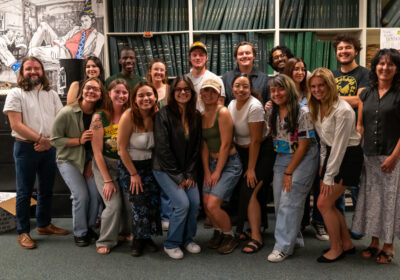Activism anew
Whether it’s Washington marches or whistle-blowers, activism has existed for decades – but it’s still shifting.
Particularly with online technology, certain fields of activism have seen changes in the past 50 years to adjust to the media-literate modern day.
The Oracle traces how four aspects of activism have changed from the ’60s and ’70s to the 2010s.
Marches on Washington
At the time, the August 1963 March on Washington stood as the largest rally ever held in the Capitol, bringing more than 250,000 people of various races and denominations together to support blacks’ civil rights.
Two Washington rallies made headlines last year, but both offered smaller demonstrations led by television hosts.
On the Aug. 28 anniversary of Martin Luther King Jr.’s “I Have a Dream” speech, Fox News host Glenn Beck stood on the Lincoln Memorial’s steps and addressed tens of thousands of Tea Party activists in his “Restoring Honor” rally.
Comedy Central personalities Jon Stewart and Stephen Colbert responded with their own Oct. 30 “Rally to Restore Sanity,” which gathered within the National Mall to take aim at Beck and other media members.
LGBT movement
One of the earliest lesbian, gay, bisexual and transgender (LGBT) activists was Frank Kameny, who was fired from the U.S. Army Map Service for his sexual orientation and organized a gay rights protest outside the White House in 1965.
Bayard Rustin – an organizer of the 1963 March on Washington – also championed gay rights. Last Wednesday, Centre Gallery showed a film called “Brother Outsider: The Life of Bayard Rustin” on the lesser-known activist.
Today, the LGBT community’s activism has a higher profile and uses technology to address its issues. After a number of suicides such as the death of Rutgers’ freshman Tyler Clementi, the “It Gets Better Project” has collected YouTube videos urging gay youth not to give in to bullying.
Columnist Dan Savage started the campaign in September and has since received more than 5,000 videos, including one submitted by President Barack Obama.
Women’s rights
In the ’60s, women’s rights activism saw a surge as “The Feminine Mystique” author Betty Friedan and others formed the National Organization of Women (NOW).
Today, third-wave feminists such as Naomi Wolf and Jessica Valenti take to CNN or websites to offer their criticisms of modern beauty and sex ideals.
Concerns like a women’s access to abortions and unequal pay between genders have persisted throughout the decades – yet the Internet has expanded the avenues to address these issues.
Now websites like feministing.com give a women’s rights perspective on subjects spanning from health care reform to the movie “Black Swan.”
Whistle-blowers
In 1971, Daniel Ellsberg leaked documents called the Pentagon Papers that detailed secret U.S. involvement in Vietnam. The documents fueled a number of New York Times articles and led to calls for Ellsberg’s imprisonment.
In the 21st century, WikiLeaks has used the Internet to release government material, including more than 400,000 Iraq War documents and more than 200,000 diplomatic embassy cables.
WikiLeaks material has provided the New York Times with several articles, and Ellsberg has voiced support for the website and its founder, Julian Assange.
What differentiates WikiLeaks from previous whistle-blowers, however, is that its documents are downloadable online from thousands of mirror websites.








